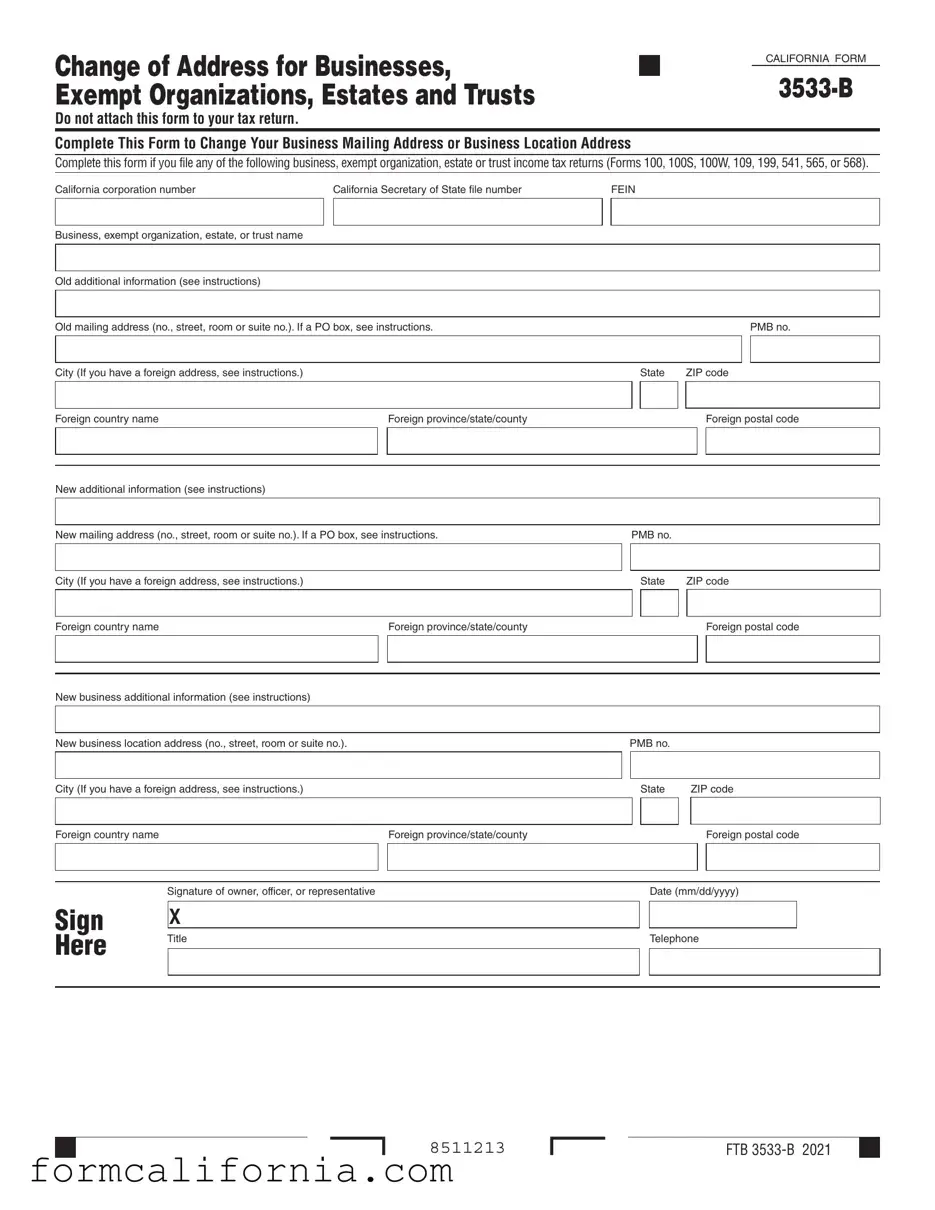The IRS Form 8822-B is quite similar to the California 3533-B form in its core function: it is used to notify the Internal Revenue Service of a change in address for businesses, estates, trusts, or certain other organizations. Like the 3533-B form, the 8822-B requires basic information about the entity, including its previous and new addresses, tax identification numbers, and the type of tax form(s) it files. Both forms are essential for ensuring that tax-related communications are sent to the correct address.
The Statement of Information (SOI) form, required by many states including California for registered corporations and LLCs, also shares similarities with the 3535-B form. Though primarily used to update the state about changes in company management, addresses, and other key details annually or biennially, it similarly ensures that the entity's current contact information is on file, mirroring the purpose of updating address information for tax compliance as seen with the 3533-B.
Analogous to the 3533-B is the Change of Registered Agent/Office form, commonly used across many states. While its primary function is to notify state authorities of a change in a business's registered agent or office location, it is similar in its administrative nature, requiring entities to update their official contact details to maintain compliance and ensure the proper delivery of legal and state correspondence.
Employer Identification Number (EIN) Update Letter is another document that parallels the 3533-B form. Though not a standardized form, businesses often need to inform the IRS when their address changes to ensure their EIN record is accurate. This letter typically includes information similar to what's found on the 3533-B, such as the business name, EIN, and old and new addresses, albeit in a less formal format.
The USPS Change of Address Form, officially known as PS Form 3575, while used by individuals and businesses for postal mail forwarding, shares a fundamental similarity with the 3533-B: both are formal notifications of an address change. The key difference lies in their recipients and the nature of their use — one for tax purposes and the other for general postal services, yet both are vital for uninterrupted communication.
Business License Application Forms or updates to existing licenses often require similar information to the 3533-B form. When a business relocates, it must update its address with the licensing authority to ensure compliance with local or state business regulations. This parallel underscores the universal need for current address information across various governmental and regulatory domains.
The Secretary of State (SOS) File Number Update Form, found in some states, while specifically aimed at updating an entity's file number or related administrative details, often encompasses the need to report address changes as well. The process and information required can mirror that of the 3533-B, emphasizing the maintenance of accurate records within state agencies.
Lastly, the Nonprofit Change of Address Form, which several states require from non-profit organizations to update their records, closely resembles the 3533-B form. Like the forms for businesses and other entities, it ensures that nonprofits' contact information is current, facilitating proper regulatory oversight and communication. This form underscores the universal need across sectors to keep address information up to date with the relevant authorities.

